User growth through product integrations
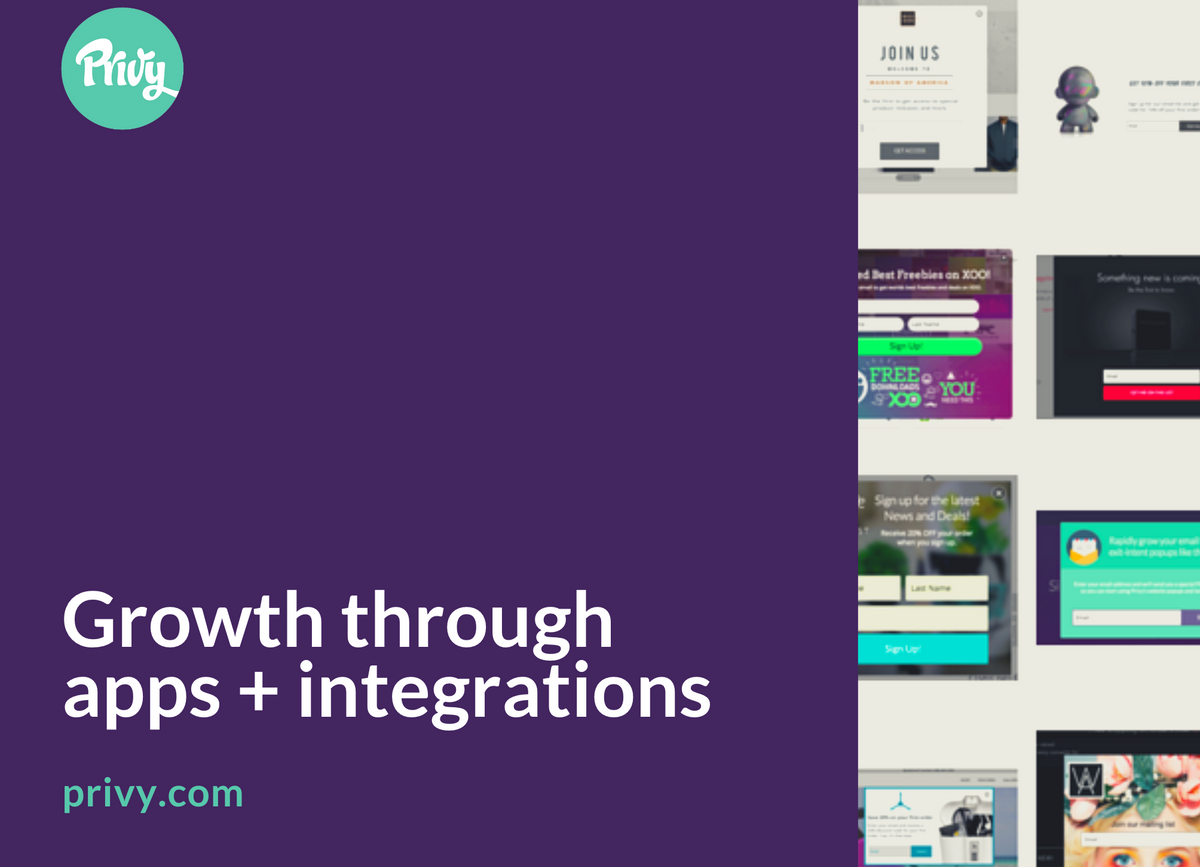
In 2016, Mike Volpe (original CMO at Hubspot) was putting together an event in Boston called "Growth camp".
It was all about how a new wave of SAAS founders were finding growth.
I don't even think the term "product led growth" was a thing back then.
Mike was an early believer in me and Privy's pivot into ecommerce.
He was the only investor that took the time to understand what was happening at Privy after we shuddered our brick and mortar business, and began to find our wedge in shopify and ecommerce.
I had a spreadsheet I updated monthly, that showed the new installs we'd get of the app, and Mike was rolling up his sleeves, watching the sheet grow. I always appreciated that about him.
After we rolled out the freemium, self serve version of Privy, I remember our number of installs vividly.
After 2 years of zero growth through direct sales to brick and mortar, this was exhilarating.
The first month we got 100 installs, then 200, then 400, then 800. It just kept growing rapidly.
And Mike watched it with me, and made a big bet. A $75K bet into Privy, at a time when on the surface we were completely "unfundable".
But he saw the growth and knew there was something here. So he asked me to share some of the early lessons we had seen in this first growth phase of Privy at the event.
So without further ado, here's the talk I gave at Growth Camp in 2016. Since its from 6 years ago, I'll add some updated color, since some of my thinking has evolved here a bit.
How Privy grew by building product integrations.
From 2015 through 2021 when we were acquired, we didn't make one out bound sales call. We grew through a product integration approach, paired with strong marketing and customer support.
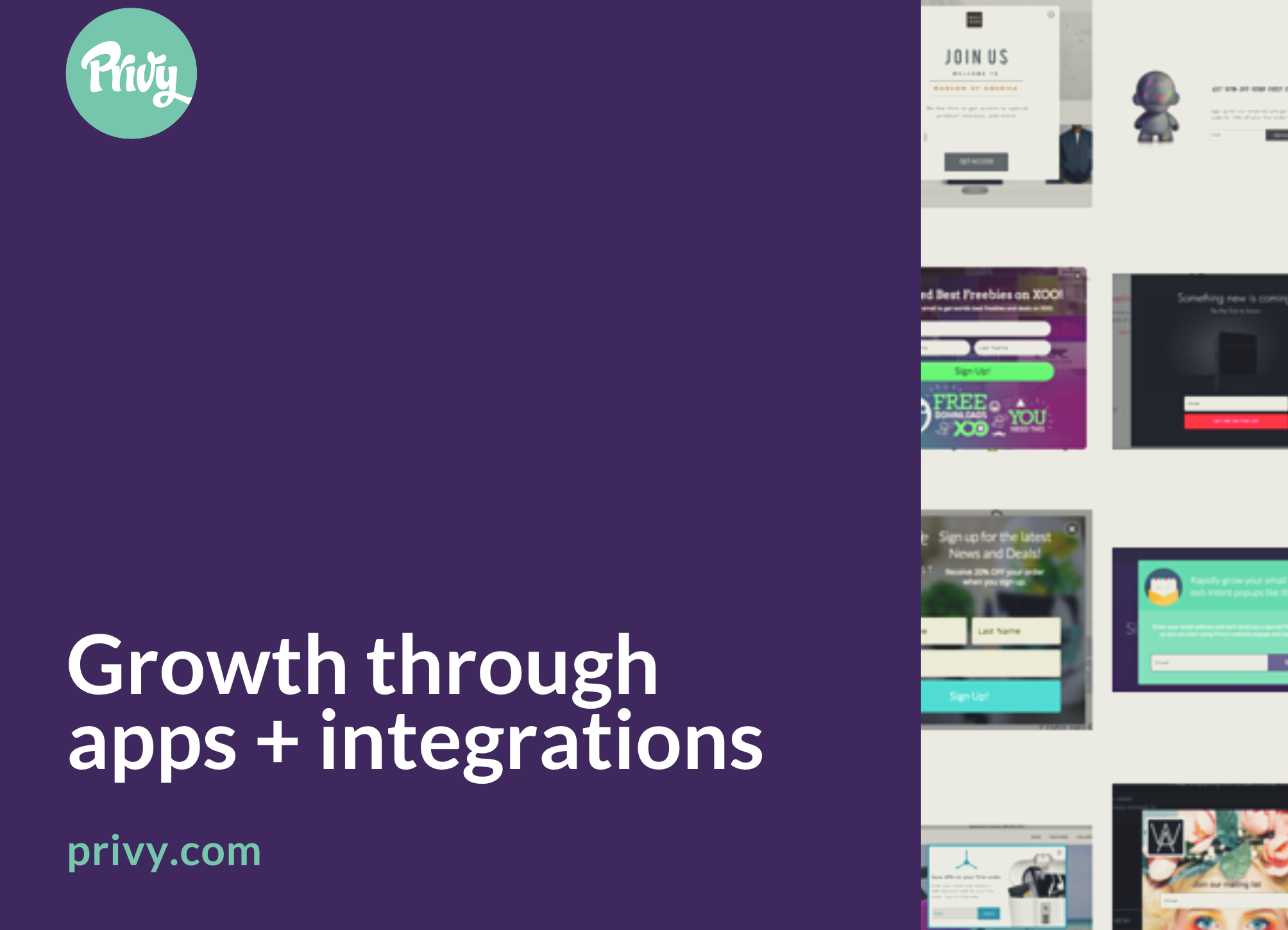
At the time, we had the perfect product wedge. This is something I encourage every founder to think through. Our wedge was "tools to grow your email list". We knew there was a ton more we could expand into, but at the time, the market was really open for a great, ecommerce focused, list growth tool. And none of the existing email providers had anything that even came close to us.
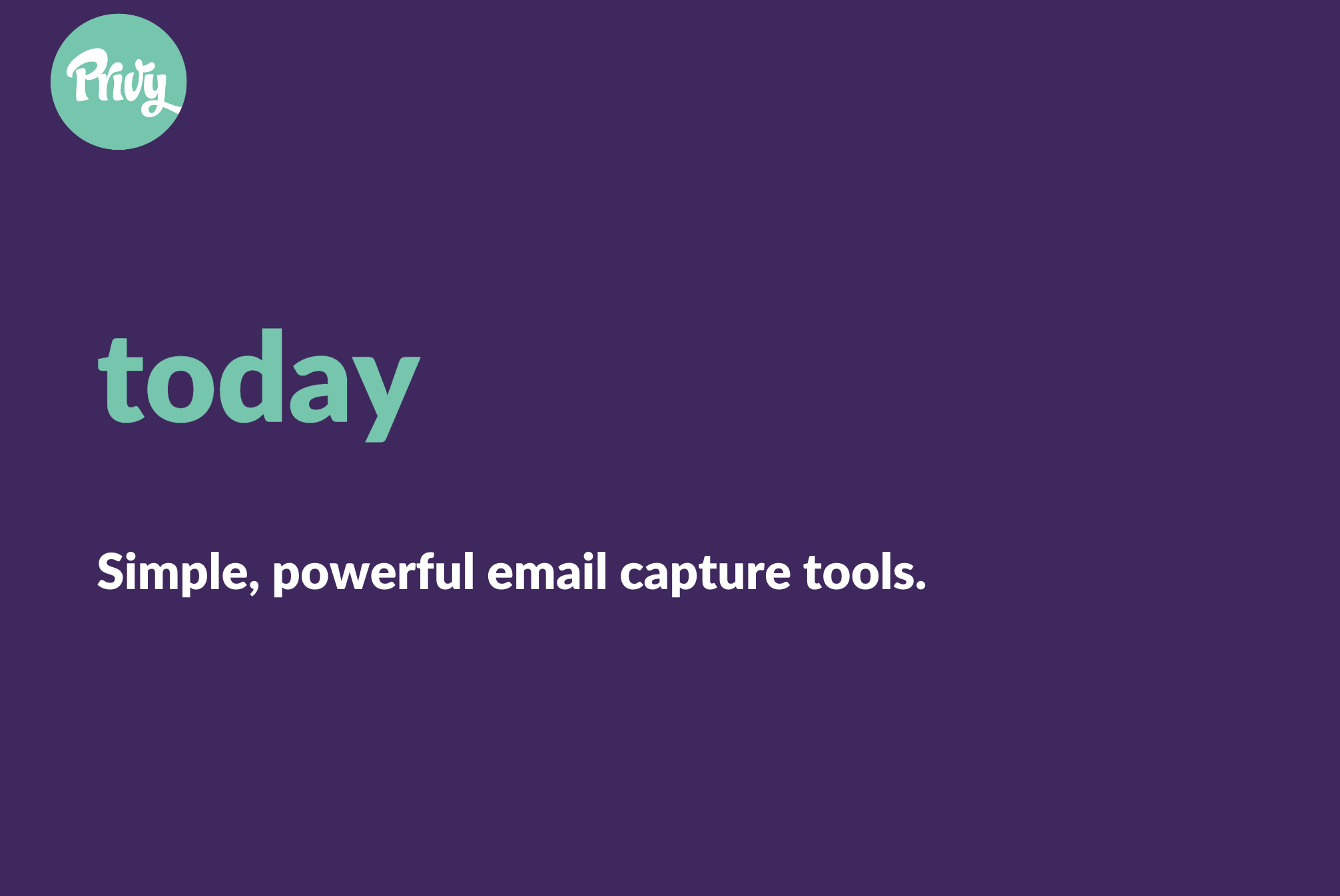
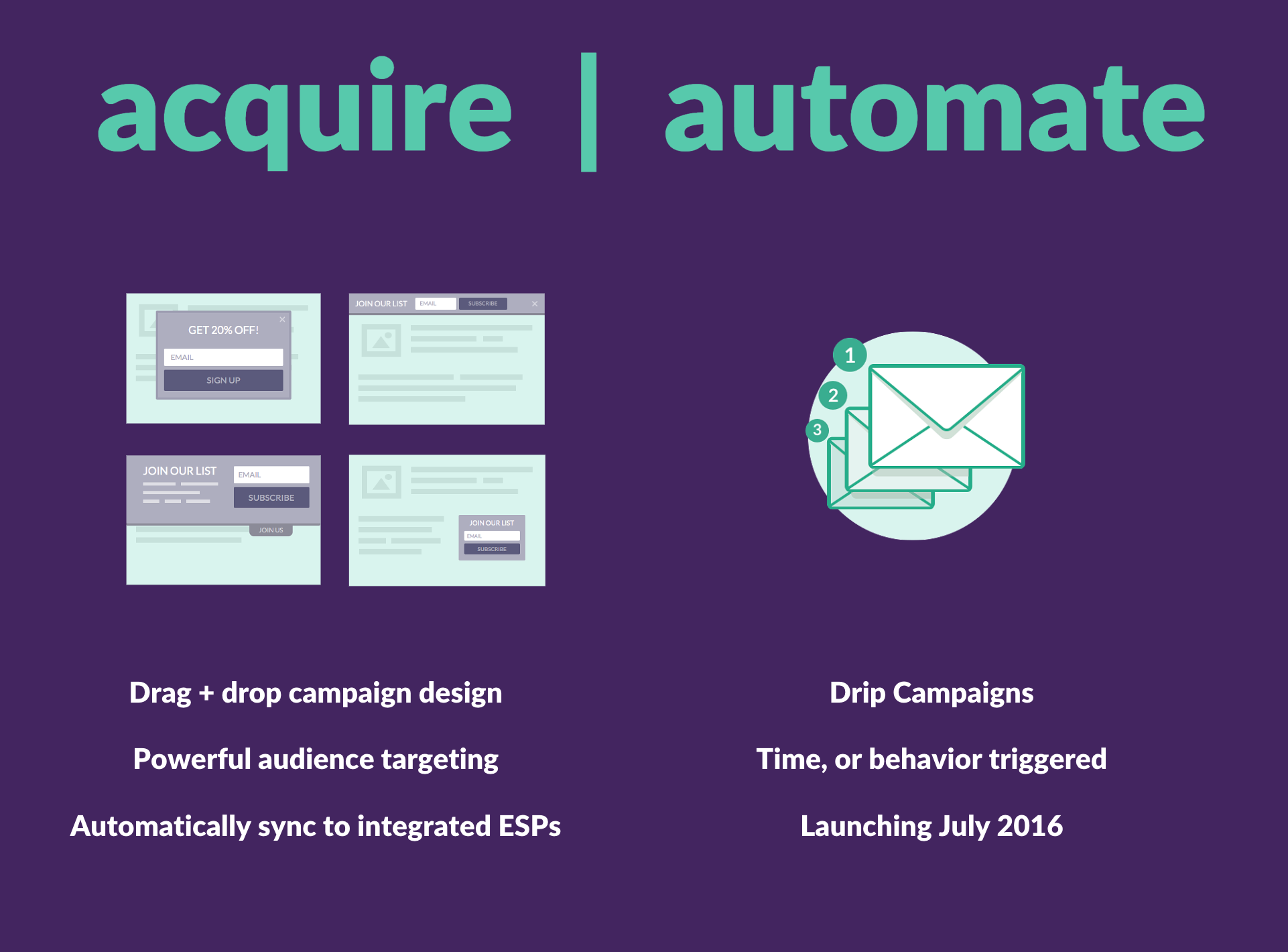
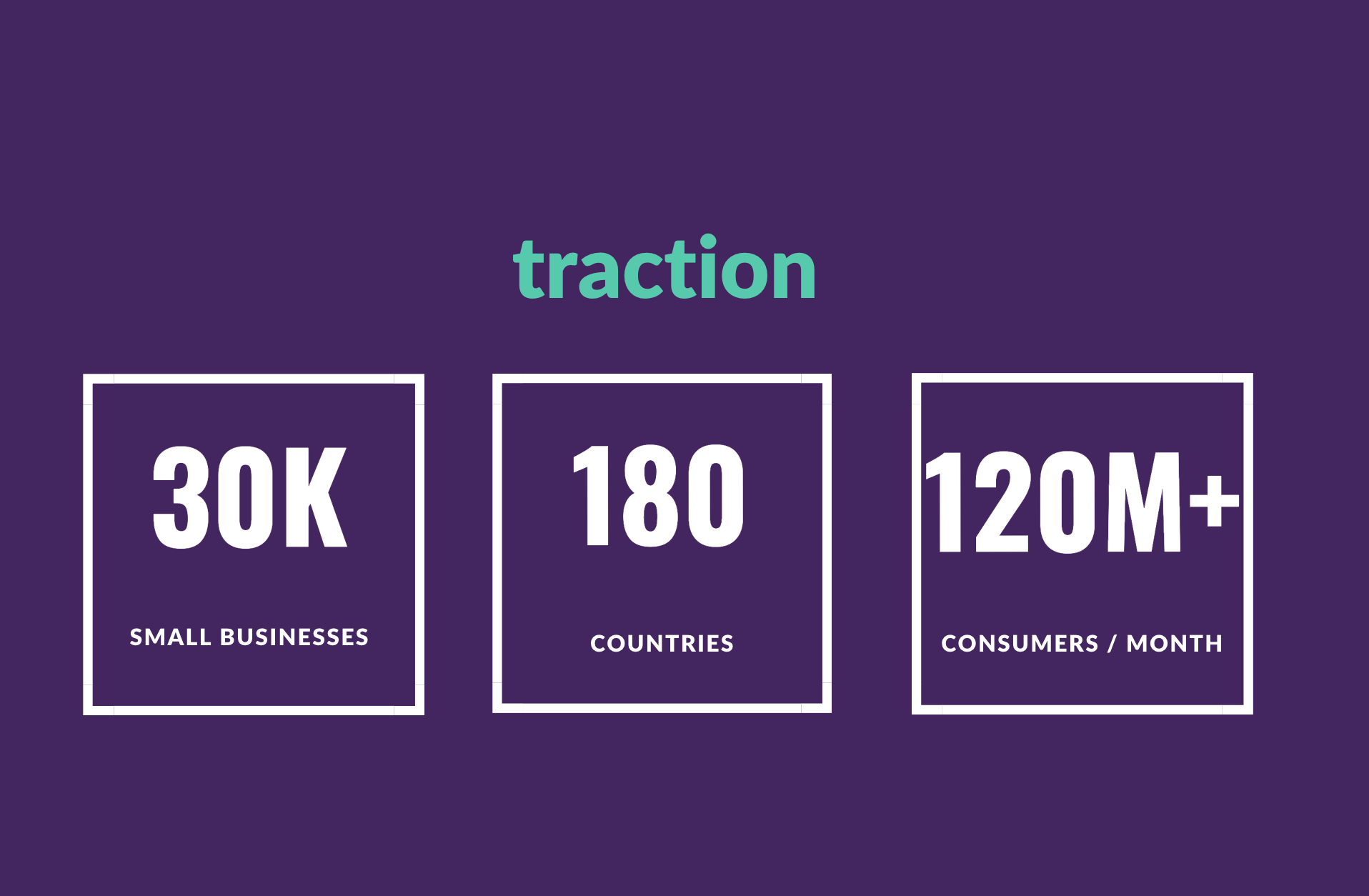
In the first iteration of the business, which failed, we had no freemium offering. It was purely direct sales to brick and mortar. It didn't work. It was hard to connect with the target customer, and there weren't similarities to how those customers bought software. We forced contracts before using the product. Basically we did everything wrong and added tons of friction before a customer could even get close to seeing value.
In V2 of Privy I wanted to change all of that. It needed to be easy to try, easy to buy, with quick time to value.
So we launched a free plan, focused on ecommerce. I used existing communities to get our first 1,000 customers but then our product team really drove growth through integrations. It was electric.
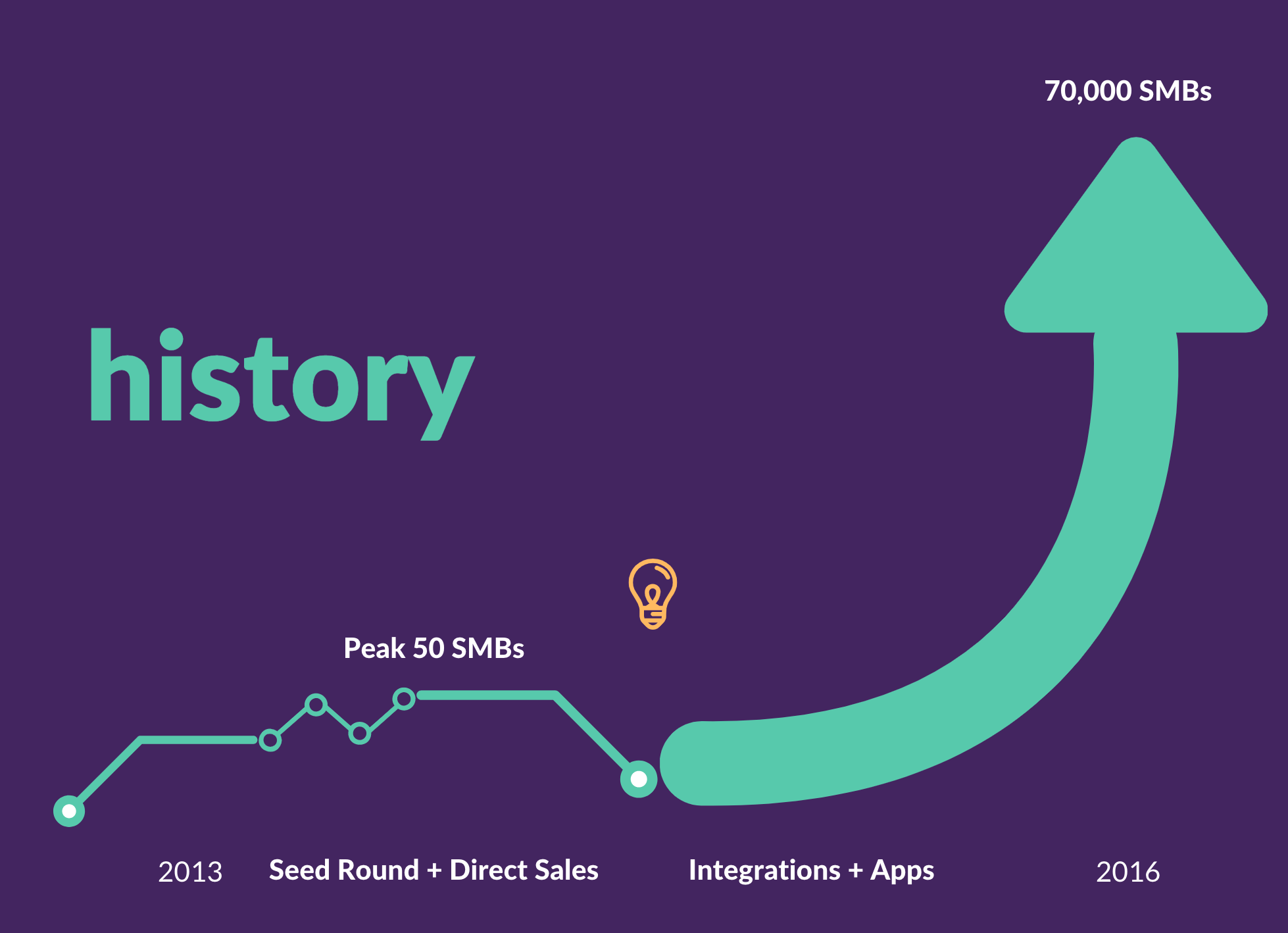
It worked well for us for a few reasons, which I think are important.
The product was truly self serve from day one, and it actually drove insane list growth results.
On top of that, every single ecommerce store already understood that email marketing was a high ROI channel for them. They knew that if they sent an email, they'd make money. So if the list was bigger, with more high intent contacts, they'd make more money.
We didn't have to educate them on the value of list growth. They wanted it, and their existing vendors didn't help.
The TAM for ecommerce stores was already massive.
And we genuinely thought that every single online shop would want list growth.
So because of that, the free tier really made a ton of sense for us.
That was our hook to make it easy to try, and quick to value, before we asked them to buy.
That removed all friction in the buying process, and things started to crank.
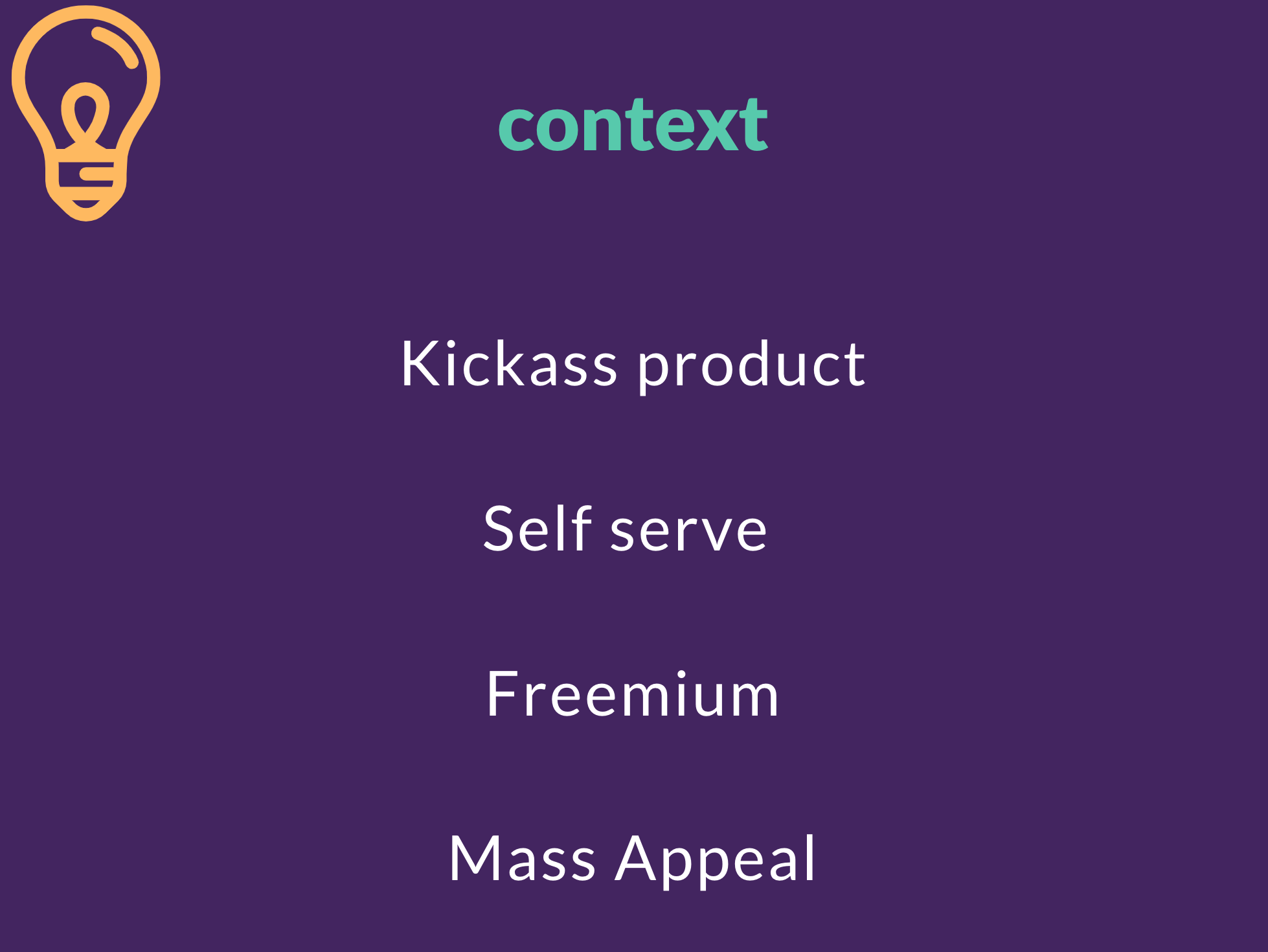
Like I said, no sales team, no real marketing yet. Just product integrations.
We realized that if we built an integration, we'd get a listing in that app store.
Then if we could seed the integration with some good shared customer case studies, which I'd find in existing online communities, then the integrated partner would be willing to do some comarketing to their user base. This was a huge unlock.
I'll never forget the internal meeting as a 5 person team, in a wework unit with no windows (couldn't afford one with windows yet), where we talked about going heads down and building as many relevant integrations as we could.
There was skepticism in the room. One of the devs saw that as a good time for him to leave the biz, but 4 stayed and we went heads down. Building integration after integration for about a year.
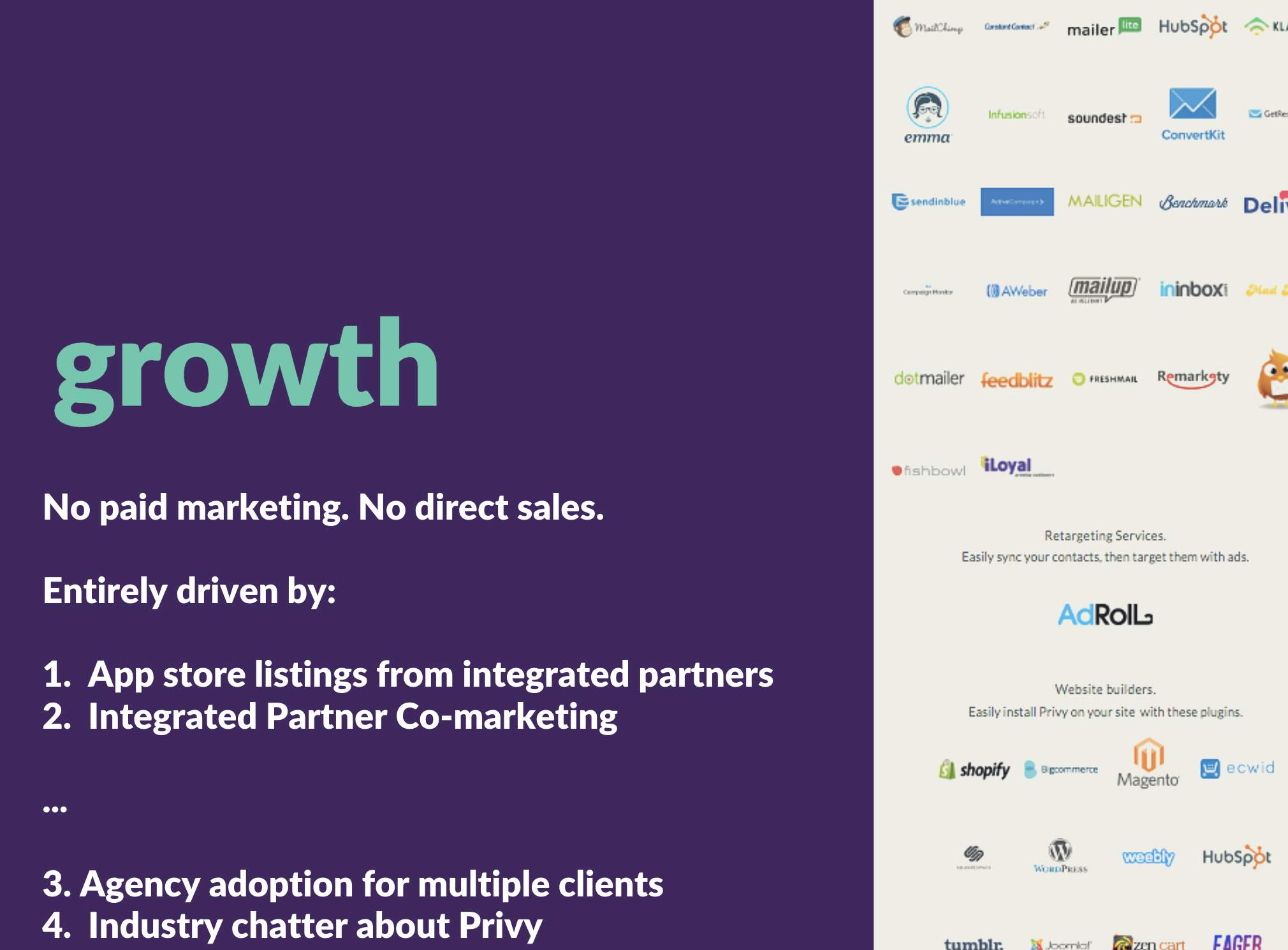
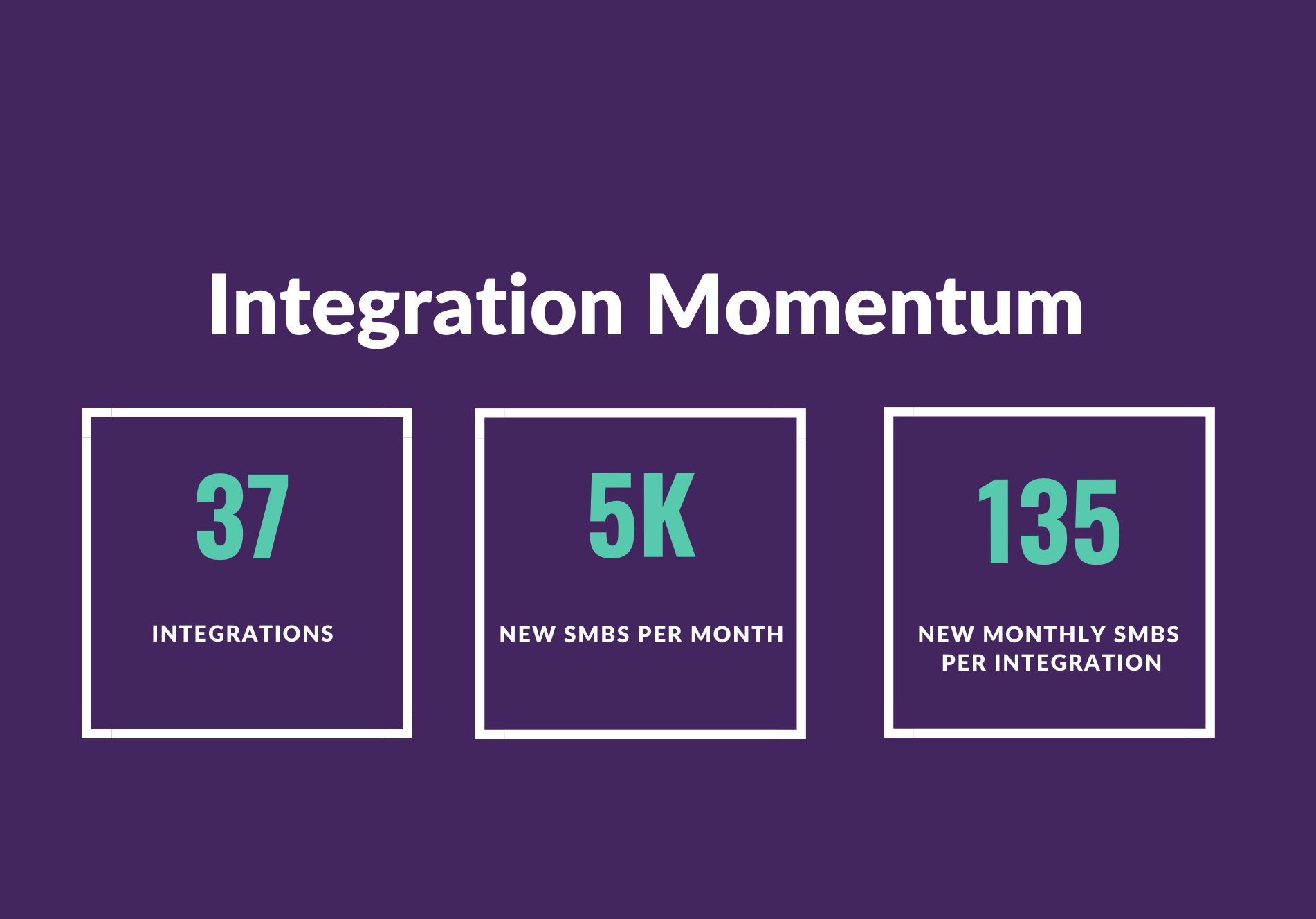
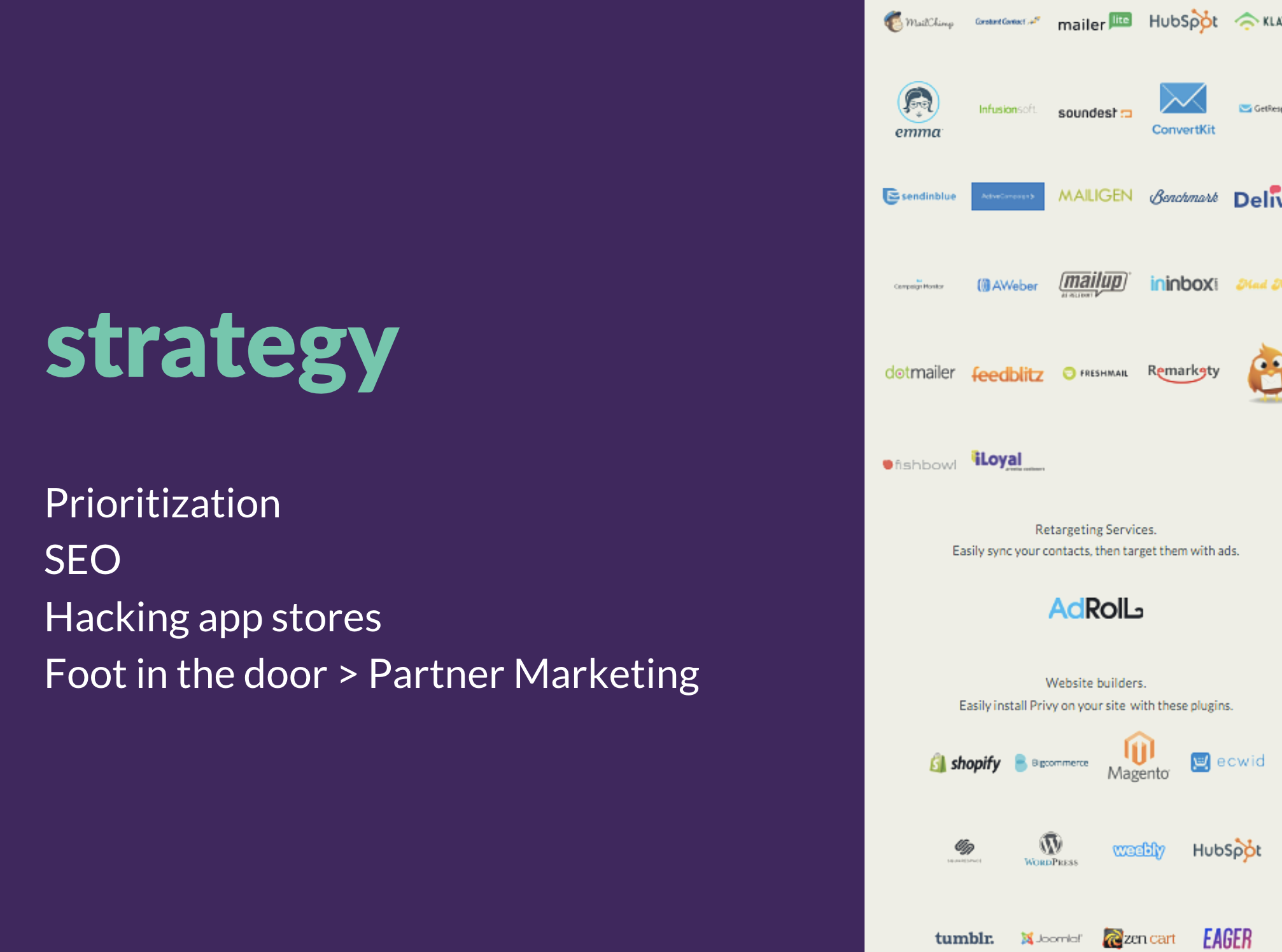
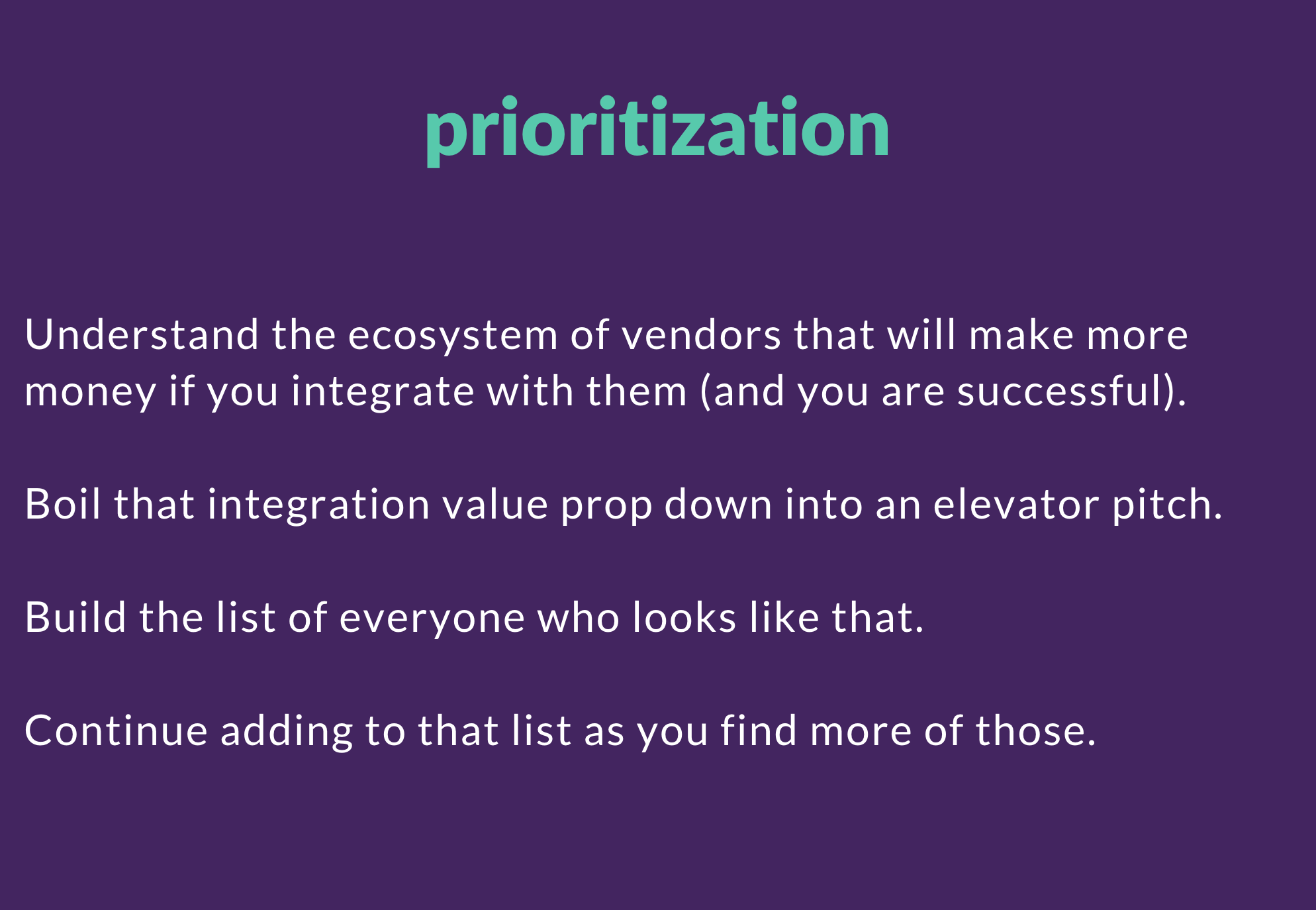
We recognized that ESPs actually loved a list growth tool once we looked closely at their business model.
ESPs priced on how big a contact list is. The bigger the list, the more MRR the ESP made, and the happier the customer was. So it was a no brainer for ESPs to love Privy back then (before we built out email marketing).
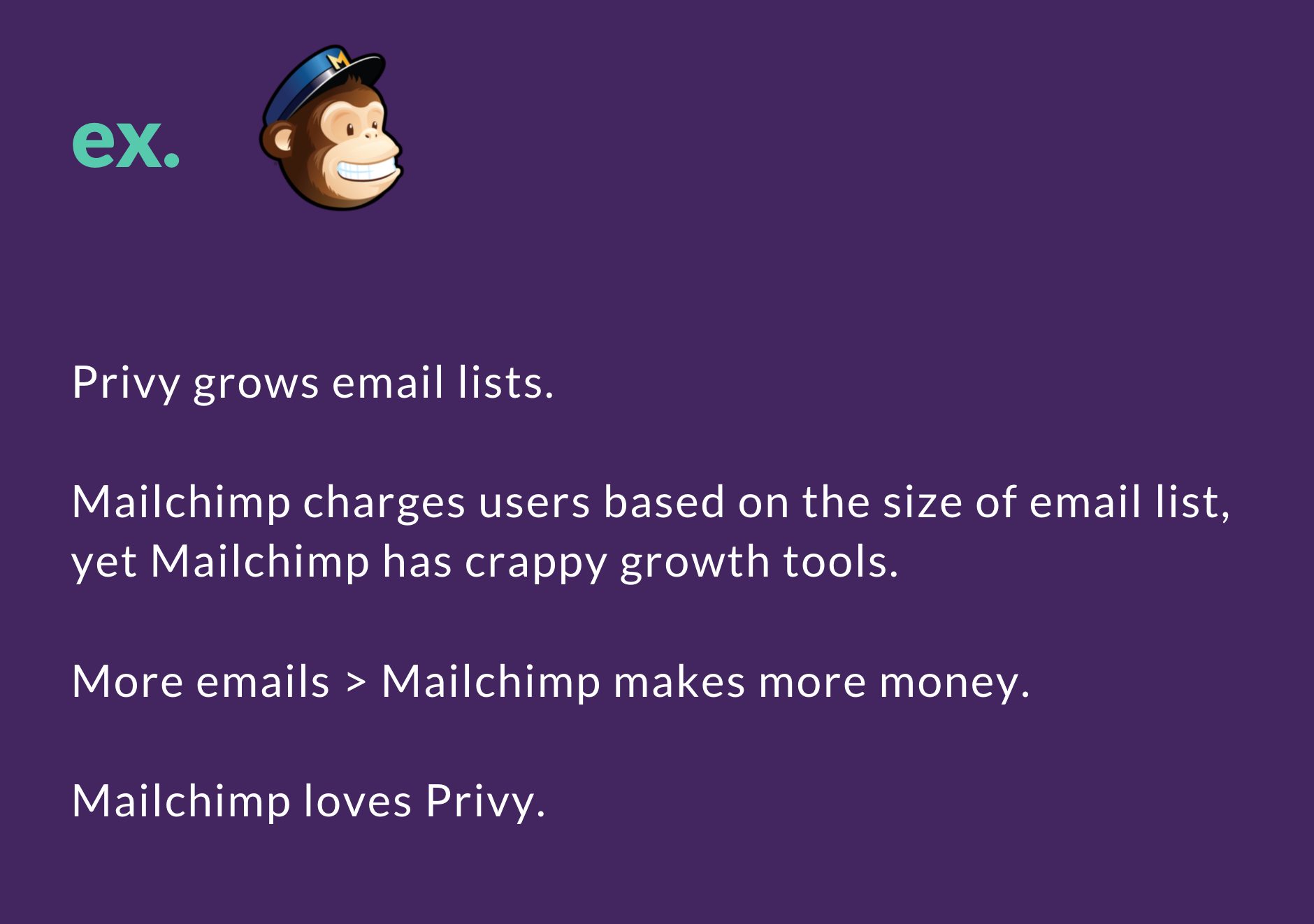
There were really two categories of integrations we built. I think this is the important piece of the strategy.
The first was into the ecommerce platforms themselves. Shopify, Bigcommerce, Weebly, Wix etc.
The others were the ESPs inside those ecosystems.
We started to learn that both were important, and both offered distinct benefits.
The ecom integrations gets your foot in the door of the ecosystem. And aside from the app listing, it was highly unlikely they'd do "comarketing", but this was the access point. And if the ecosystem was large enough, you'd start getting installs quickly once live.
But then we'd penetrate that specific ecosystem by integrating with the top 10 ESPs or apps inside that ecosystem. These absolutely would do comarketing.
You'd get fewer customer referrals from the "deep" category, though they were incredibly relevant, and you'd get more from the "ecosystem" category.
But because we were doing both, it really cemented us as "the list growth tool for ecommerce".
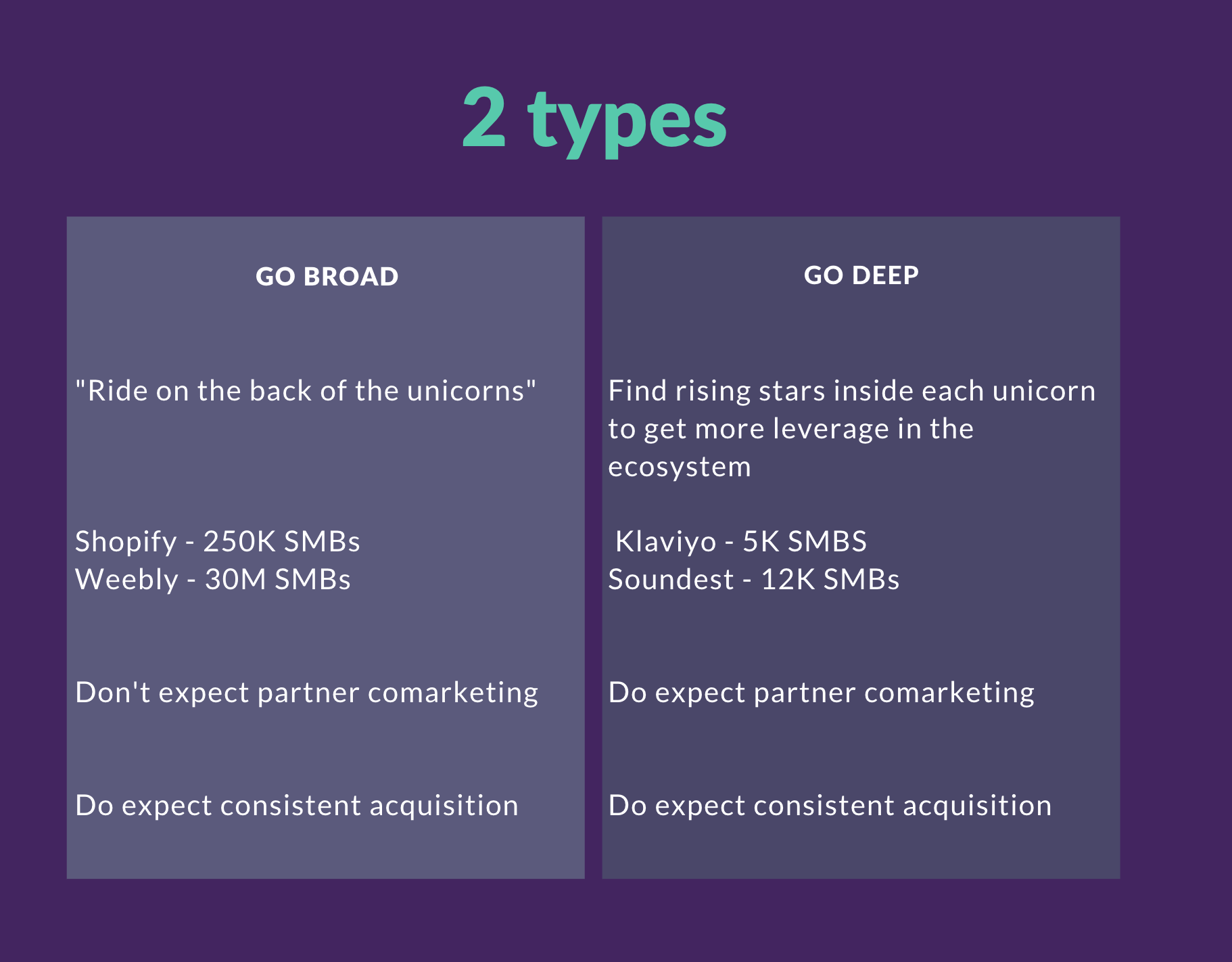
Of course, we'd build some integrations, and maybe they'd add 10 free users a month. Others would drive hundreds.
In hind sight, some of these ended up weighing on us as a team, but I stand behind the fact that we needed to build 50 integrations to find our mojo and jumpstart growth.
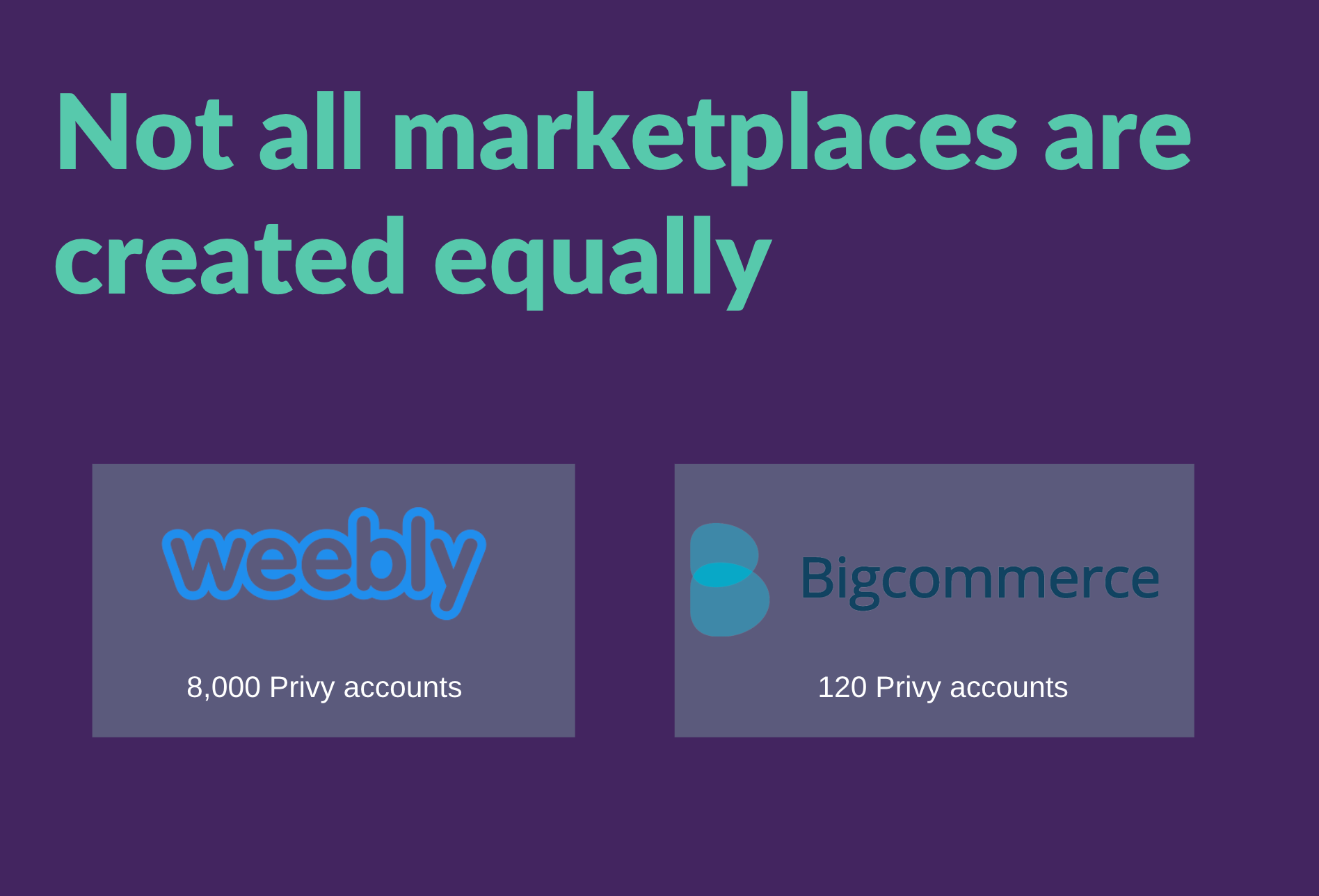
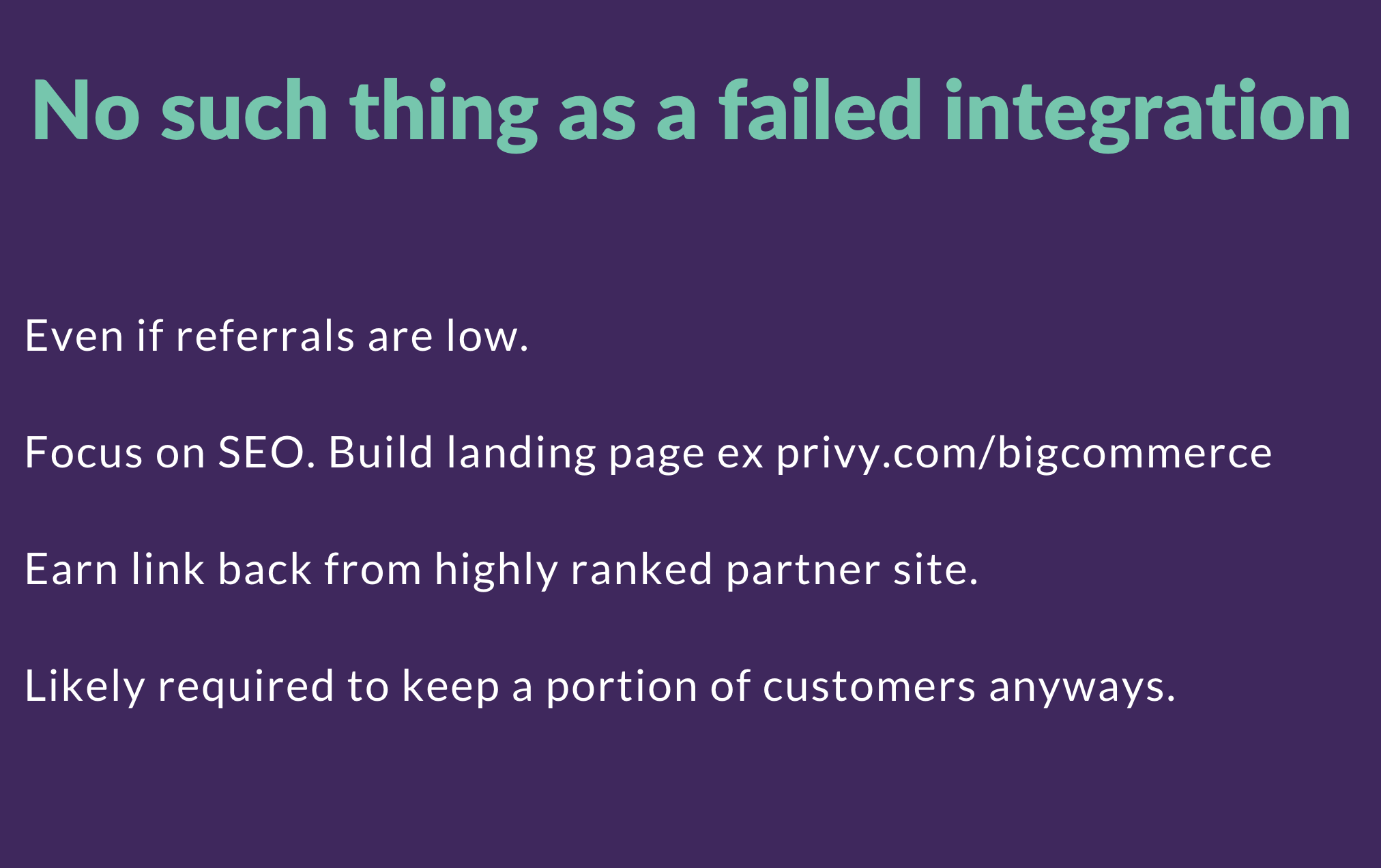
But the part that I think we really really did well, was the initial marketing after the integration was live.
For each integration we launched, I published a landing page on privy.com, a help doc on privy.com and we'd ask the integrated partner to add a help doc as well.
This helped us absolutely dominate SEO around the key words that mattered most to us before Privy had real brand recognition.
It's a simple playbook I learned from the one time I met the founder of Mailchimp.
Example below.
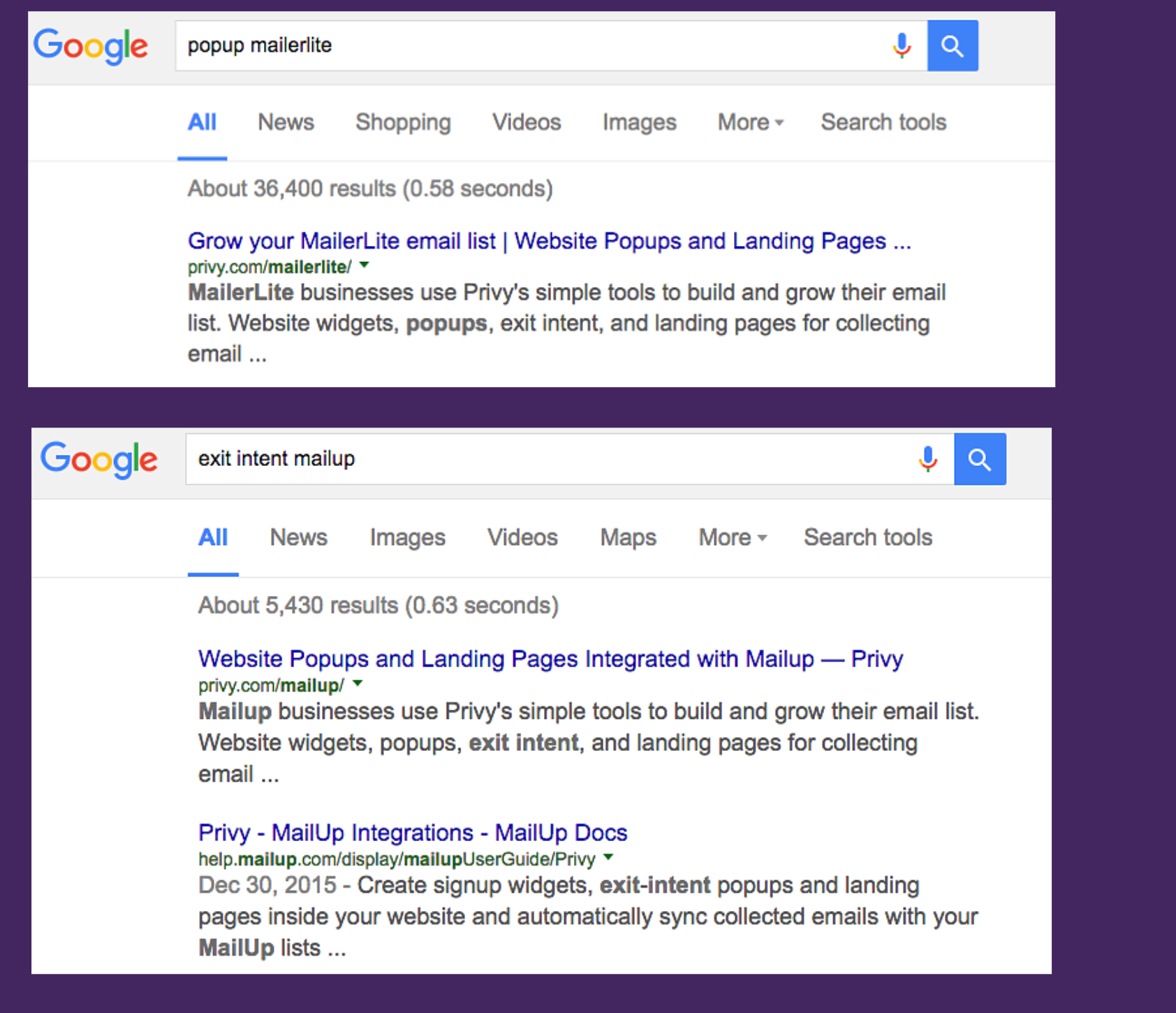
After that, we got really good at writing our app store listings to own those important search terms that had high search volumes, along with anyone searching for the integrations we offered, even competitors.
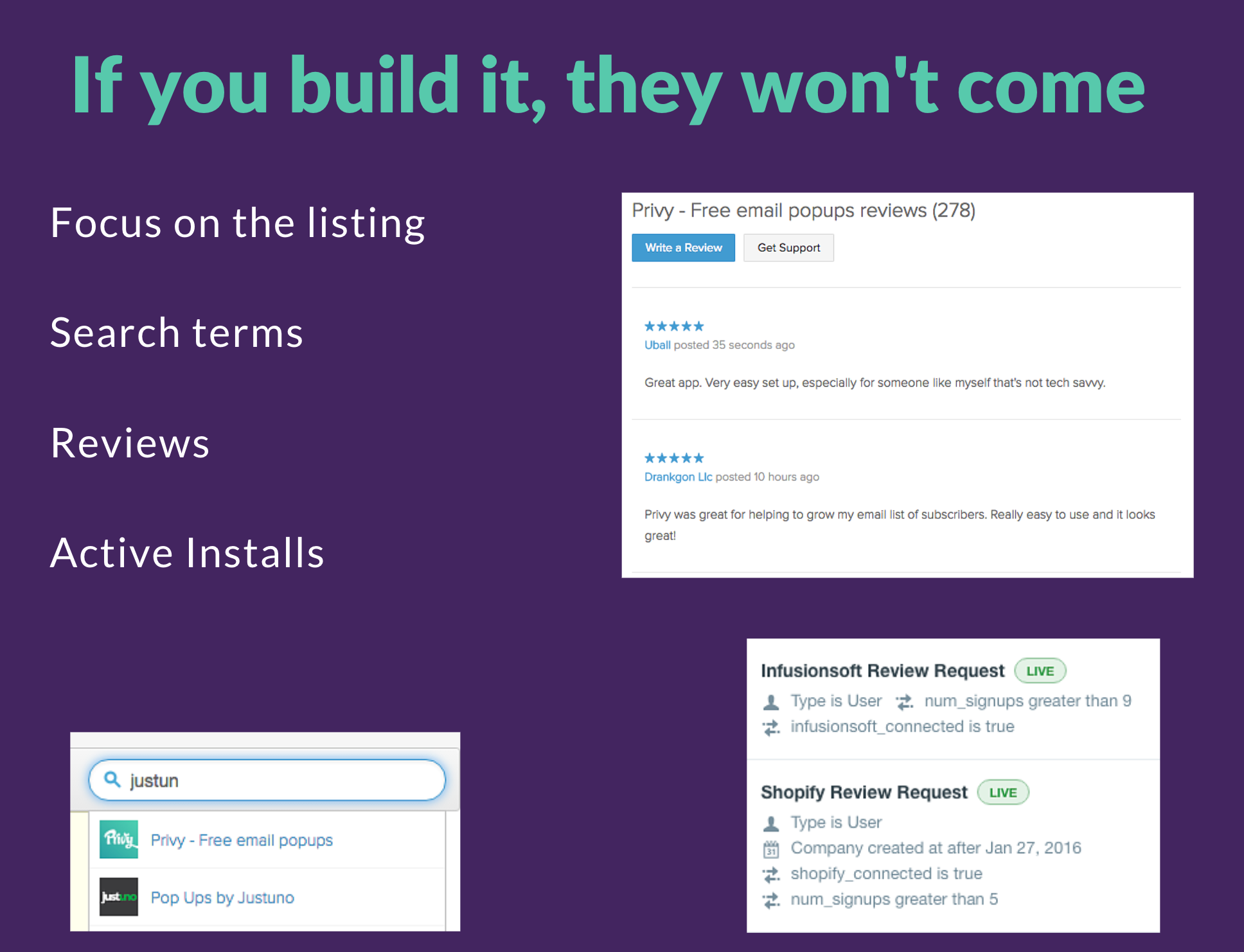
And we went on a multi-year comarketing rampage. Mostly with those ESP partners that aligned so well (and why understanding that point is critical to knowing who a good integration really is).
This strategy got us webinars, guest blogs, back links. Almost for all 50 integrations we built.
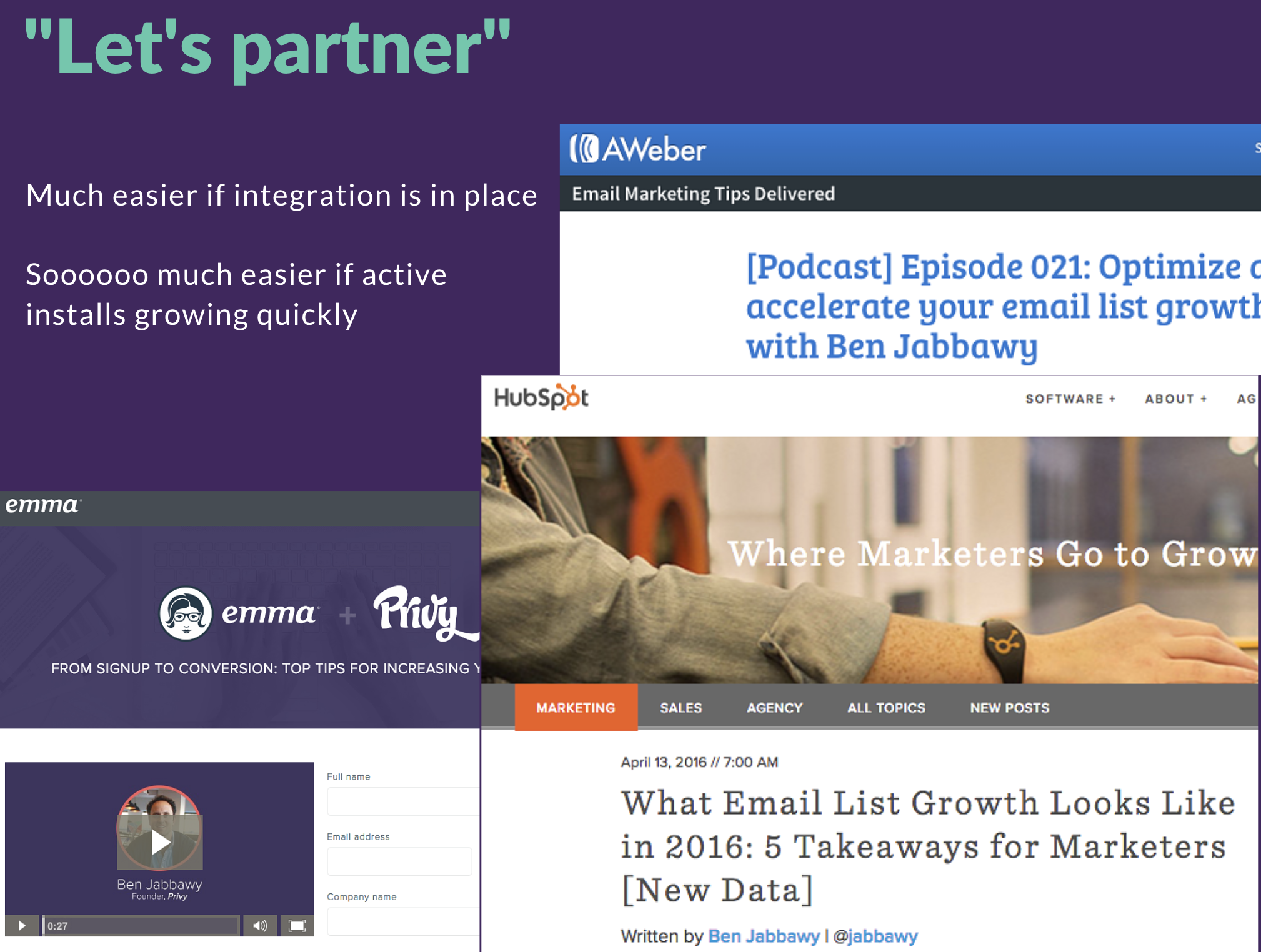
We repeated this from 2016 through 2019, which is when we really started expanding our email offering, then competing with all our ESP partners.
That's a story for another day.
Tons of hard work from the product team. But seeing the whole strategy should answer the question "why didn't you just build zapier" and do it once, then offer all integrations through zapier.
It was really the combo of integration, comarketing and SEO that made this work so well for us.
